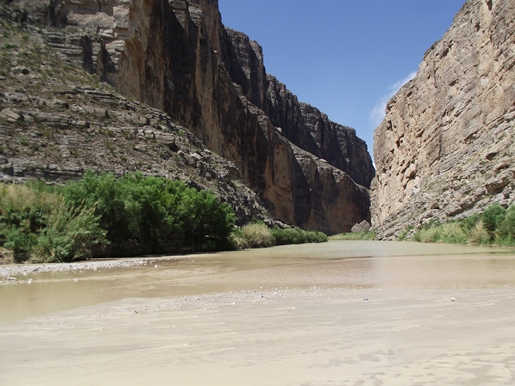Though this article is from Colorado Parks and Wildlife, this information applies to all hikers:
Colorado has a reputation for our outdoorsy ways and adventurous attitudes. We love to raft and kayak in whitewater, such as in the Arkansas Headwaters Recreation Area. We water ski at places like Lake Pueblo State Park. We plunge down snowpacked mountainsides on skis. We mountain bike on remote single-tracks. We climb cliffs. We run steep inclines for exercise and fun. We fish and hunt and go wildlife viewing.
But we have one activity that reigns above all others: Hiking. A reader poll on Ranker.com puts Colorado well ahead of Washington, Utah, Oregon and Alaska in the top 5 states for hiking.
We’re talking everything from gentle walks through the meadows and forests of places like Mueller State Park in Teller County, to steep trails with incredible exposures along cliffs like the Dixon Trail in Cheyenne Mountain State Park, or the hundreds of miles of trails that meander through
Rocky Mountain National Park.
And we
hike 14ers. That’s shorthand for mountains with summits reaching 14,000 feet above sea level and higher. These are generally difficult trails due to elevation gain, length and oxygen-depleted altitude. We have more than four dozen 14ers in Colorado and it’s a badge of honor to conquer them on foot. Last summer, it’s estimated more than 334,000 people hiked Colorado’s 14ers. I can only imagine how many more people are hiking simple, everyday trails.
That’s a lot of people wandering around our outdoor spaces. And because a lot of them are new to Colorado and the outdoors, it’s a good time to talk about trail etiquette to keep the trip safe for yourself, others and the environment.
First, you need to approach a hike as you would a long vacation. Scope out your route to make sure it is the safest and most effective way of getting where we want to go. Don’t let your new trail adventure turn into a nightmare by getting lost. Research where trails begin and end and be realistic in judging your ability to cover the distance. Then plan to start early enough so you don’t end up hiking at a time of day that makes you feel unsafe. This is especially important if you get lost. Best to have daylight for searchers to have a chance of finding you.
Just as important is knowing the terrain. Anyone who has stepped on different textures of land understands that not all shoes work for all textures and trail grades. Walking shoes may be fine on a hard surfaced, flat trail but lousy if you will be on a dirt-and-gravel trail requiring climbing or a steep descent.
Make sure you have the proper gear to get you to and from, in an enjoyable and safe manner.
Next you need to think about food and water. And don’t tell me you don’t need to pack food because you’ll only be gone an hour or two. Think about what might happen if you get lost. Or if you get tired from exerting yourself at altitude more than you expected. Or you just get hungry. You will start to feel stressed and confused. Food and water are going to help you out.
With food and water you usually produce trash. And that brings me to an important trail etiquette rule: Pack it in, pack it out. It’s part of the “leave no trace” ethic of the outdoors. You’ve heard the expression: Leave only footprints and take only memories. Do not leave anything behind. Trash includes wrappers, bottles, toilet paper, bags with your pet poop, grocery bags and un-eaten food. This is critical because we share our trails with millions of people and other species.
Leaving no trace also means not cutting trees or moving rocks or picking plants. The ecosystem operates in the way it is intended, and we unfortunately don’t know enough to change it safely.
If you are lucky enough to hike a trail in solitude, don’t forget that there is always someone else who wants to enjoy the same scenery. Don’t ruin by leaving your trash - this includes dog waste bags where dogs are permitted on trails.
But more often, you won’t be alone on a route. Just like respecting other people on the highway, we must respect other people, and animals, on the trails. And the others you encounter won’t always be fellow hikers.
We share our trails with bikers and horse riders. While they may not be using the trails quite like you, they deserve just as much recreational freedom. It’s like the old saying, be nice to people and hopefully they will be nice back. If you share the trails with respect and dignity, they probably will, too.
One last request: Please keep your phone in your pocket while you are outdoors. OK, take a photo or two. Even a selfie, if you must. But do everyone a favor and don’t share every step of your journey. We are seeing headlines every day about people who die in the outdoors taking a dangerous selfie or walking off a cliff because they are looking at their phone instead of the trail and scenery.
The outdoors is a great chance to escape from the noise of your busy life. Immerse yourself in the serenity of Colorado’s great outdoor spaces. Put your phone away so that you aren’t distracted from the wonders around you.
Apply the right etiquette to your outdoor adventures, and you are sure to have no problems.
Just like everything else in life, we can enjoy the moments in what we do, while still managing to be safe doing it. Keep calm, and adventure on!
Jeff
HikingintheSmokys.com
RockyMountainHikingTrails.com
HikinginGlacier.com
TetonHikingTrails.com
Ramble On: A History of Hiking





























